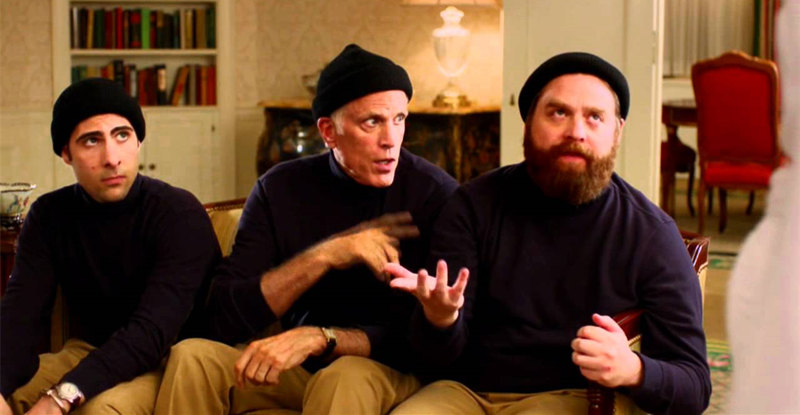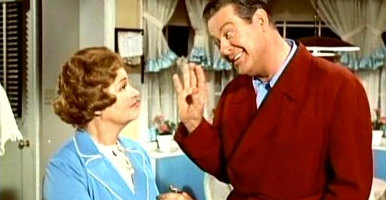If Nicolas Cage and Adam Sandler found themselves sitting at the same awards banquet table, they could pass the entire evening by comparing notes on their “I Hate You” anti-fan clubs. Often, it seems, if their name is attached to a film, the venom quite naturally flows from critics’ pens.
The last time I checked, only 7 percent of the Rotten Tomatoes critics gave “Season of the Witch” a “fresh” rating. I’m not going to raise that percentage by casting a vote in favor, but I will say that this film isn’t the dead fish wrapped in newspaper you’ve heard it was. In fact, it reminds me of a cross between the old dripping-with-moodiness Hammer films and the lower-budget B-movie adventures I used to see as a kid, back when movies were double features and you didn’t have to make a trip to the ATM to be able to walk through the turnstile. It reminds me a lot of “The War Lord,” a 1965 cheapie ($3.5 million budget) starring Charlton Heston and Richard Boone as knights who find themselves trying to establish order at a remote, barbarian coastal village. “Season of the Witch” has the same look and feel, and a plot that falls in the same “okay” category . . . redeemed by the overall atmosphere and a few memorable moments.
But students of history will take an instant dislike to this film. I understand that it’s a cross-genre blend of horror and adventure, but would it have killed anyone to be more historically precise? The realism we get in spades, with ghoulish and grotesque shots of humans suffering from the black plague and a sense of medieval life pervading the film like a thin but ominous shroud. Following a Hammer-like graphic opening sequence of witches being hanged and drowned by an emissary of the Church in the village of Villach, in 1235 A.D., there’s a jump in time and we’re introduced to two knights–Cage and Ron Perlman (“Hellboy”)–fighting in the service of God and the Church in the Crusades. Which of the nine-plus Crusades is hard to say. Alarmed by the expanding Ottoman Empire, a succession of popes called for Holy Wars to take back the Holy Land for Christians in intermittent Crusades that raged, off and on, between 1095 and 1291, with splinter-group campaigns like the one the Knights of St. John waged continuing long beyond that.
Presumably, given the dates and their dress, these two knights are a part of that Order, but we don’t know for sure. A scene establishing the time period and context would have been nice; instead, we get a comical battle montage with a confusing progression of dates and places, the look of the fighting changed only by the season of the year or time of day. It all happens so quickly that I stopped counting at five dated battles. Instead of giving us a fix on the time period, it feels like a revolving door that the two knights keep going around-and-around in, not figuring how to get out. Never mind that the Crusades brought out the absolute worst in humankind, and that in God’s name knights raped and pillaged and tortured as they spread like a plague of locusts over the land. After seven or so years of fighting, we’re shown one battle in which Behmen (Cage) finally realizes that women and children are being killed, and he coaxes his friend Felson (Perlman) to join him in walking away from it all.
That muddled opening is about as bad as I’ve seen, but once the door stops spinning and Behmen and Felson make their way back home again as deserters in disguise, things settle down a bit. The plague is still ravaging the homeland–Behmen speculates it might be because of the atrocities committed abroad in God’s name–and someone spots their swords and recognizes them as deserters. How news of their desertion traveled more quickly than they did on horseback is another question for the historical- (or logical-) minded. Same with how quickly they’re enlisted to escort a suspected witch (Claire Foy) to a remote monastery where she will be tried for witchcraft. Behmen insists he’ll escort her only if the Church promises she’ll get a fair trial. Really? For a guy who insists he’ll no longer serve the Church, he certainly does an about-face. And why would he suspect the Church would or could guarantee a fair trial when something as irrational as witchcraft is the charge?
Then again, horror and action films aren’t genres known for logic. Check yours at the door and you’ll be surprised at how entertaining this film can be. The episodic plot has just enough terrors and challenges along the way to hold our interest, and there’s a real Hammer-like atmosphere throughout. Robert Sheehan as an altar boy who wants to be a knight and Stephen Graham as a scamming religious relics” salesman (translation: con artist) they’ve recruited from the stocks to be their guide also add interest.
First-time feature writer Bragi F. Schut keeps us guessing as to the real nature of this young woman-slash-witch, and while the action scenes take some post-production short-cuts, Cage and Perlman make for a fun partnership–though their betting over who buys drinks for killing the most people is a bit forced, and they both (Perlman’s character, especially) have a habit of uttering anachronisms. How jarring is it to hear a knight say, “Let’s get the hell out of here”? Couldn’t someone involved with the project have suggested it’s a quick look-up in the Oxford English Dictionary or the Dictionary of American Slang to see when that phrase entered the public lexicon? Same with “I saved your ass a hundred times” and “We kill the bitch here and now.” Oh wait. We’re suspending logic.
The opening sequence with the hanged and drowned witches invites us to contemplate how this young witch is related, and I have to say that I personally am never positive. An end conflict that I won’t reveal helps a little, but there’s never a full sense of “Ahhh, I get it.” The CGI work on the monsters that the knights encounter in this horror tale also seem just a little too comic-book to be believable as medieval-era creatures.
Still, darn it, when the atmosphere is dripping with moodiness–helped, no doubt, by the presence of Christopher Lee–and the realism of the Middle Ages is supported by a plot that moves nicely along, do we have to be sticklers for logic and accuracy? If you can just go with the flow, “Season of the Witch” will give you an evening’s entertainment, and may even make you think a bit about organized religion. But you have to look past the film’s flaws to enjoy yourself.
“Season of the Witch” is rated PG-13 for thematic elements, violence, and disturbing content. No language or sex, in other words. And the disturbing images are bloated, disgusting, open-sore bodies, both alive and dead, that are victimized by the plague. The violence is battle and monster-battle.
Video:
Given how dark or dusky the palette is for this film, there’s an incredible amount of detail. In 1080p, “Season of the Witch” looks fantastic, brought to 50GB Blu-ray disc using AVC/MPEG-4 technology. Colors are natural-looking, and close-ups have that unsettling sense of immediacy that you’d hope for in an action-horror-adventure. The only time that the look of the film really suffers is during some of the battle and battling monsters sequences, when we get blurred frames and stop-motion camera tricks instead of realistic combat. That’s a decision, though, and no fault of the transfer. If there are any problems with the transfer, I didn’t see them. Black levels are strong enough to push detail even in shadows or dappled light. “Season of the Witch” is presented in 1.78:1 widescreen.
Audio:
The featured audio is an English DTS-HD MA 5.1 that delivers a pretty dynamic range of sounds, with many effects traveling across the soundfield. The subwoofer kicks in and out, though, with no consistent infusion of low bass except in horror and battle moments. But the treble is bright and appropriately clanky during swordfights and the variety of witch and harpie sounds fill out the high range nicely. Another audio option is French Dolby Digital 5.1, with subtitles in English SDH, Spanish, and French.
Extras:
Surprisingly, no one was feeling terribly talkative about this film. I wonder why. All we get are 10 minutes worth of deleted scenes (which make you wonder why they didn’t just insert them into the film and call this an Extended Cut), a long (10 min.) alternate ending that some viewers might prefer, a theatrical trailer, and a CGI featurette on “Becoming the Demon.” There’s also a Digital Copy of the film.
Bottom Line:
“Season of the Witch” is not the stinker that everyone says it is, but you do have to ignore its flaws in order to be entertained. It’s oddly compelling in spite of itself.


